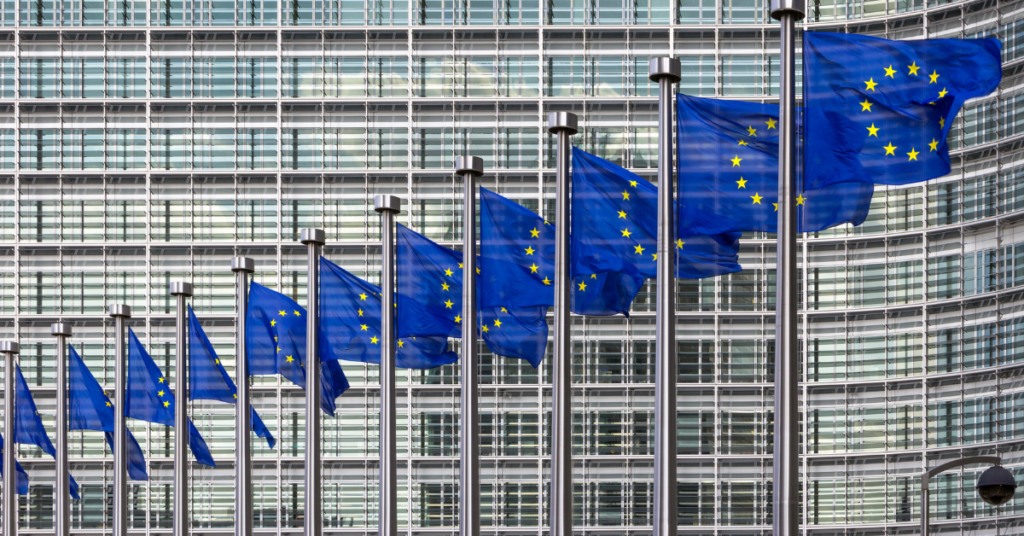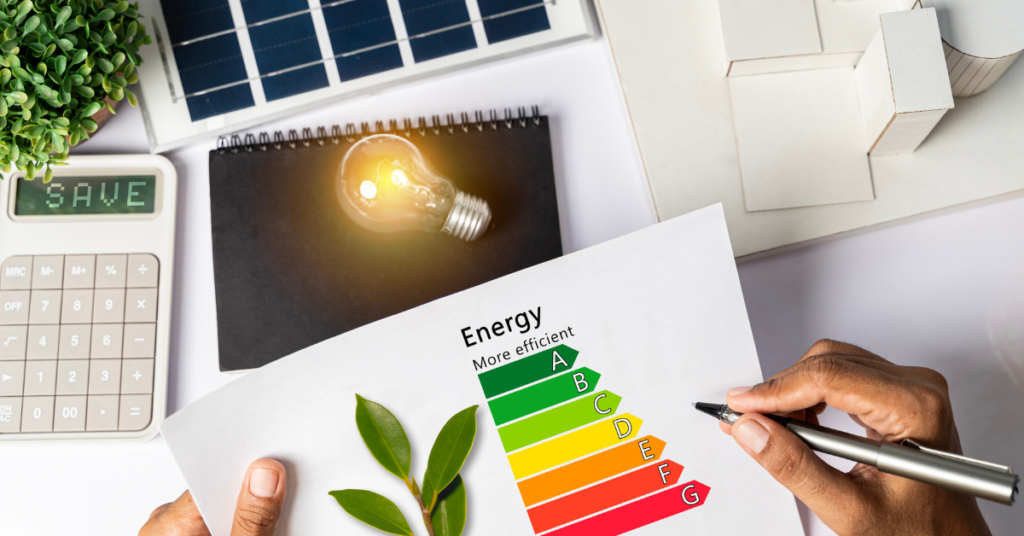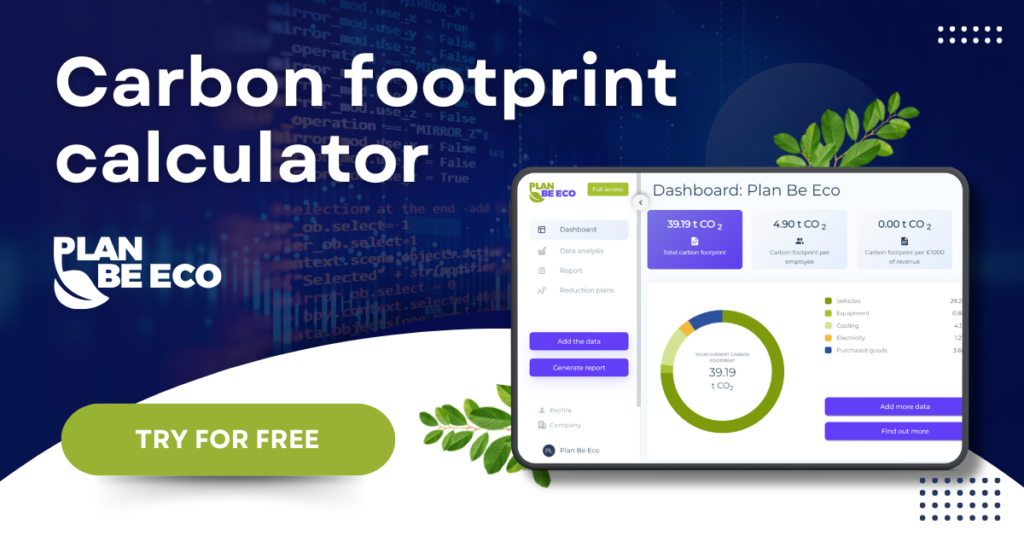Decarbonization step by step: a recipe for a competitive and resilient business
![plan_be_eco_[Decarbonization step by step a recipe for a competitive and resilient business]](https://planbe.eco/wp-content/uploads/2025/04/plan_be_eco_Decarbonization-step-by-step-a-recipe-for-a-competitive-and-resilient-business_ENG-1024x536.png)
Decarbonization is one of the most repeated words in the context of the future of business. For CEOs, business owners and ESG teams, it not only means environmental responsibility, but more importantly a strategic decision about the future of the organisation. What exactly is decarbonization, why should it be addressed now and how can a tool such as the CO2 calculator from Plan Be Eco help with this?
Table of content
What is decarbonization?
Decarbonization is the process of reducing greenhouse gas (GHG) emissions, in particular carbon dioxide (CO2), emitted by a company’s operations. It aims to reduce the carbon footprint and ultimately achieve climate neutrality. In practice, this means identifying the sources of emissions by counting the carbon footprint, reducing emissions where possible and then compensating for what cannot be reduced. It is an action aimed at protecting the environment and reducing the negative impact of economic activities on the climate.
These measures include, for example:
- modernising production processes,
- thermo-modernisation of buildings,
- shortening supply chains,
- improving energy efficiency,
- switching to renewable energy sources (instruments such as PPAs, renewable energy certificates),
- reducing carbon emissions by optimising the use of raw materials.
Decarbonization in EU

The EU is stepping up efforts towards climate neutrality by 2050, and 2025 is a key year. COP29 called for increased climate finance. In March 2025, the UN stressed that the EU’s climate plan is a “guarantee of economic security”. Decarbonization is a strategic and economic priority for the EU.
The main frameworks are the European Green Deal and the “Fit for 55” package. Green Deal (2019) aims for climate neutrality by 2050. ‘Fit for 55’ (2021) aims to reduce emissions by 55% by 2030.
February 2025 saw the launch of theEuropean Clean Industrial Deal, the EU’s “business plan” to accelerate renewable energy and industrial decarbonisation. Ursula von der Leyen pledged to implement it within 100 days, prioritising EU competitiveness.
Ursula von der Leyen about decarbonization
Ursula von der Leyen emphasises the balance between climate and competitiveness, aiming for faster, cleaner and fairer growth. She supports the Clean Industry Agreement as a “transformational business plan” to drive growth, supporting energy-intensive industries and clean technologies.
Key themes are innovation, investment and strategic autonomy, including investment in innovation, mobilising finance (e.g. Decarbonization Bank) and reducing dependency. Decarbonization secures energy supply and reduces costs. Von der Leyen acknowledges the challenges and the need for flexibility, promising a pragmatic and technology-neutral approach.
Where do emissions in companies come from?
Sources of emissions vary by sector, but the majority of companies’ emissions come from:
- Scope 1 – direct emissions from own sources (e.g. boiler rooms, company fleet),
- Scope 2 – indirect emissions related to the purchase of electricity and heat,
- Scope 3 – emissions along the value chain: from suppliers, to business travel, to product use.
In many industries, it is Scope 3 that accounts for more than 85% of total greenhouse gas emissions, the majority of which here are Cat 1 purchased raw materials and services, i.e. purchasing decisions. Importantly, these emissions are generated by people – through specific business, technological and operational decisions. They are also responsible for huge amounts of carbon dioxide entering the atmosphere worldwide.

EU recommends decarbonization of business
- Businesses need to align with EU climate targets (net zero by 2050, -55% by 2030) and follow discussions of a -90% target by 2040.
- It is crucial to develop decarbonisation strategies that include reducing the carbon footprint (Scopes 1, 2 and 3) through RES, energy efficiency, electrification, process optimisation and the closed-loop economy.
- It is essential to accurately measure, verify and report CO2 emissions (scopes 1, 2 and 3) in preparation for CSRD requirements.
- The value chain should be engaged to reduce Scope 3 emissions by working with suppliers and optimising logistics.
Why is decarbonization important?
1. EU climate targets and regulations
The European Union maintains an ambitious target: climate neutrality by 2050. Although the so-called Omnibus package may modify the pace of implementation of some requirements, the Net Zero target remains unchanged. Companies will be required to report and reduce carbon emissions and align their operations with a climate neutrality strategy.
Learn about legal instruments to reduce carbon emissions [read here]
2. Competitiveness and market advantage
Companies that implement decarbonisation strategies:
- are better perceived by investors and partners,
- win tenders and contracts with large customers,
- have better access to finance (green finance),
- comply with sustainability requirements more easily.
3. Risk management and business resilience
Reducing greenhouse gas emissions also means less operational risk, greater cost predictability and more stability in the face of rising energy prices and future carbon taxes.
4. Green finance
Business decarbonization is increasingly linked to access to green finance. Companies that take active steps to reduce greenhouse gas emissions and implement sustainable practices can often count on preferential terms for green loans, credits and bonds. Financial institutions are increasingly willing to offer such instruments, seeing decarbonisation not only as a regulatory and environmental requirement, but also as an opportunity for long-term growth and financial stability for their clients. Access to green finance is thus becoming not only an enabler of green investment, but also a driver of business transformation in a more sustainable and competitive direction.
Is a decarbonization strategy mandatory?
Although the formal obligation to have a decarbonization strategy mainly applies to the largest companies regulated by the CSRD, more and more medium and small companies are implementing it voluntarily. This is due to market pressures, customer expectations, as well as the need to adapt to trends around the world.

How to implement decarbonization step by step in a company?
Step 1: Calculate your carbon footprint with the help of the CO2 calculator
You cannot manage something that you do not measure. Therefore, the first step is to count your carbon footprint. With the help of Plan Be Eco’s CO2 calculator, which allows you to calculate your emissions in the full three bands (1, 2 and 3), without the need for expertise. It also allows you to see where your company is on the road to meeting its climate targets.
Step 2: Create a decarbonization strategy
Based on the results of the calculations, develop a decarbonisation action plan. This can include:
- emission reduction targets for the coming years
- recommendations for suppliers, buildings, materials and energy consumption
- education and communication activities within the company
Step 3: Implement and monitor progress
The strategy must be implemented and regularly updated. Monitoring emissions year on year allows the effectiveness of actions to be assessed and adjustments to be made. Decarbonization in construction, manufacturing or transport means concrete actions: from retrofitting to recycling materials to using green energy sources.

Challenges and opportunities for businesses in the EU's green transition
The green transition brings challenges such as investment costs, complex regulations, availability of clean energy and raw materials, skills gaps and maintaining competitiveness. There are concerns about weakening regulations and emissions targets.
It also presents opportunities, including access to finance (e.g. Innovation Fund), growing demand for clean products , the potential for cost reductions through efficiency, strengthening brand reputation, competitive advantage and the creation of new markets in a circular economy. It is also possible to shape EU policies through consultation.
Why is carbon footprint reduction crucial for business? [read].
How does the Plan Be Eco support companies in the decarbonisation process?
Plan Be Eco is more than just a CO2 calculator. It is a comprehensive tool to support companies in the decarbonisation process – from calculations to reporting to expert consultation.
With us you gain:
- access to an intuitive CO2 calculator that takes into account all 3 scopes of greenhouse gas emissions
- possibility to test the tool for 7 days for free, without providing your card details
- consultation with experts who will help you interpret the data and identify actions to reduce emissions
- compliance with CSRD requirements and reporting standards, even in construction and manufacturing.
Summary
Decarbonization is no longer an option – it is a necessity. For company leaders, it is an opportunity to build a competitive advantage, secure business and fit in with global climate goals. It is worth starting with the basics: counting emissions, creating a strategy and implementing actions. Plan Be Eco is a tool that makes this process as easy as possible, translating into effective progress in lowering the negative impact on the atmosphere.
Despite the challenges, the transformation creates opportunities for funding, increased demand and efficiency, driving future business success.
Want to find out what your company’s carbon footprint is? Test Plan Be Eco for 7 days for free and start on the road to decarbonization.
